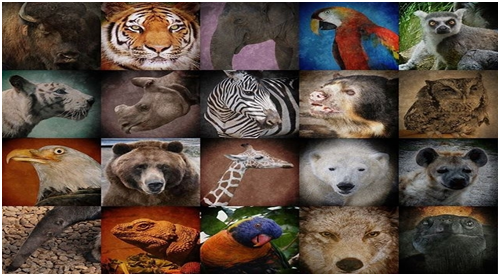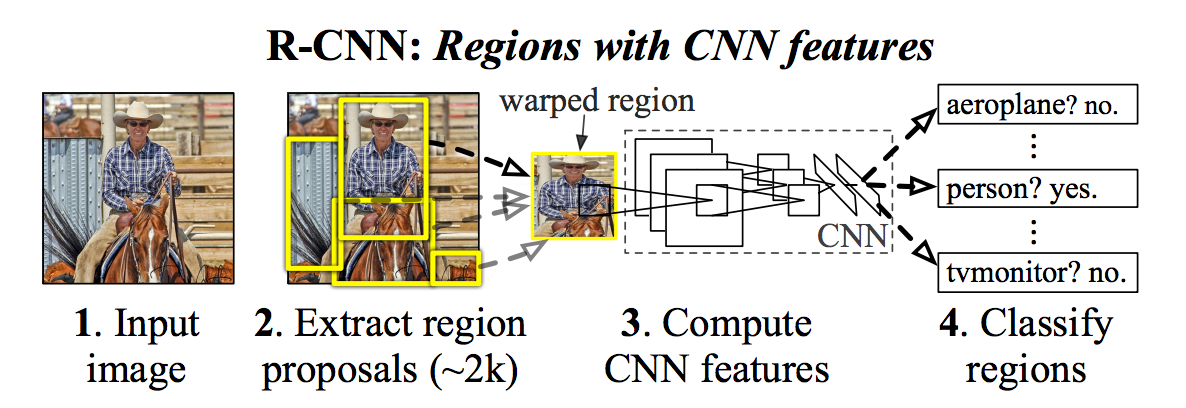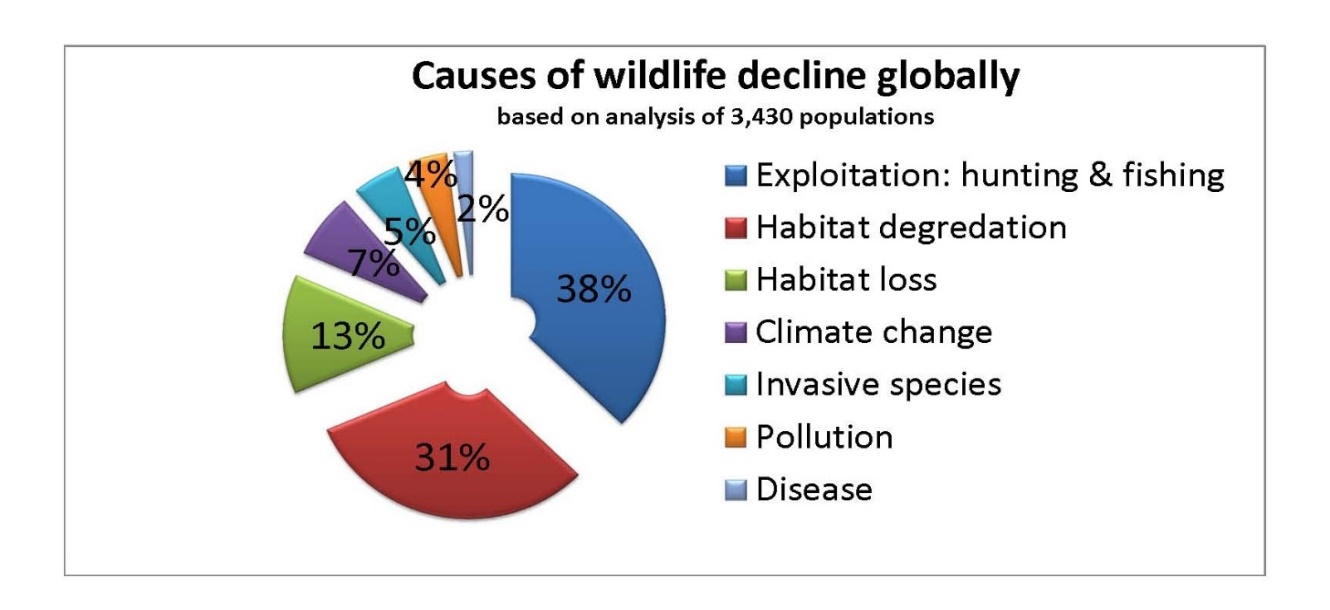Ijraset Journal For Research in Applied Science and Engineering Technology
- Home / Ijraset
- On This Page
- Abstract
- Introduction
- Conclusion
- References
- Copyright
Enhancing Wildlife Preservation through Animal Recognition
Authors: Monika Deokar, Nupoor Kale, Anil Kadam, Gaurangi Belamkar, Vaishnavi Harihar
DOI Link: https://doi.org/10.22214/ijraset.2024.65109
Certificate: View Certificate
Abstract
Recent years, we have seen growing public interest in wildlife conservation, with increasing emphasis on animal rights and welfare. While wildlife welfare aligns with reasonable and legal utilization of wildlife, it is crucial to distinguish it from broader animal rights concepts. This review addresses critical issues related to wildlife extinction, endangerment, and conservation efforts on both national and international levels. We have provided a key strategy include habitat conservation, combating deforestation, regulating pet trades, and addressing marine pollution through legislation. Notable recent projects have focused on habitat restoration, anti-poaching measures, and species-specific conservation initiatives. This impact of human activities on wildlife and ecosystems has highlighted the need for comprehensive approaches to safeguard biodiversity. This paper evaluates current conservation efforts, emphasizing the importance of integrating innovative solutions with traditional practices to effectively address the ongoing challenges in wildlife protection.
Introduction
I. INTRODUCTION
India, a land of diverse ecosystems and rich biodiversity, is home to an incredible array of wildlife. From the majestic Bengal tiger to the endangered Asian elephant, and from the vibrant avian species to the fascinating amphibians, India's wildlife is a treasure trove of nature’s splendour. However, this precious heritage is facing numerous threats, including habitat fragmentation, human-wildlife conflict, poaching, climate change, and environmental degradation.
The consequences of inaction are stark, with the Worldwide Fund for Nature reporting a staggering 60% decline in global wildlife populations over the past five decades. In India, the situation is equally pressing, with many species teetering on the brink of extinction. The need for innovative conservation solutions has never been more urgent.
India's diverse ecosystems, ranging from the Himalayan mountains to the tropical rainforests, are home to a vast array of wildlife, each playing a vital role in maintaining the delicate balance of nature. The loss of a single species can have far-reaching consequences, leading to the degradation of ecosystems and the loss of ecosystem services essential for human well-being.
The importance of wildlife conservation in India cannot be overstated. Not only does it ensure the long-term survival of endangered species, but also maintains the health of ecosystems, supports human livelihoods, and contributes to the country's ecological and economic prosperity. Despite efforts by the government, conservation organizations, and local communities, wildlife conservation in India faces numerous challenges. Habitat destruction, human-wildlife conflict, poaching, and climate change continue to threaten the very existence of India's wildlife.
This research paper aims to explore the critical importance of wildlife conservation in India, with a focus on endangered species in forest ecosystems. By examining the current state of conservation efforts, identifying areas for improvement, and exploring innovative solutions, we hope to contribute to the development of effective conservation strategies that protect India's precious biodiversity and ensure the long-term survival of endangered species."
A. Protected Areas
Rajaji National Park, located in the foothills of the Himalayas in Uttarakhand, India, is a vital habitat for numerous endangered species. The park spans over 820 km² and is home to a diverse range of flora and fauna. The park's terrain is characterized by dense forests, grasslands, and rivers, making it an ideal habitat for animals like the Bengal tiger, Asian elephant, Himalayan black bear, leopard, deer, wild boar and several endangered bird species, including the Great Hornbill and the Himalayan Monal.
The park's forests are characterized by a high level of endemism, with several plant species found nowhere else in the world. The park's rivers and streams support a wide range of aquatic life, including several species of fish and otters. The park is also an important cultural site, with several ancient temples and artifacts found within its boundaries.
Rajaji National Park was designated as a protected area in 1976 and is considered a crucial conservation site. However, the park faces several threats, including habitat fragmentation, human-wildlife conflict, poaching, and climate change. To address these issues, conservation efforts are underway, including habitat restoration, wildlife monitoring, community engagement, and ecotourism initiatives. The park's conservation efforts are supported by several organizations, including the World Wildlife Fund (WWF) and the Wildlife Institute of India (WII).
Table 1: National Park Dataset
|
Category |
Information |
|
Location |
Uttarakhand, India |
|
Area |
820 km² |
|
Elevation |
300-1,000 m |
|
Vegetation |
Sal, Teak, Bamboo, Grasslands |
|
Fauna |
Bengal tiger, Asian elephant, Himalayan black bear, Leopard, Deer, Wild boar, Great Hornbill, Himalayan Monal |
|
Conservation Status |
Protected Area (1976) |
|
Threats |
Habitat fragmentation, Human-wildlife conflict, Poaching, Climate change |
|
Conservation Efforts |
Habitat restoration, Wildlife monitoring, Community engagement, Ecotourism |
|
Organizations |
World Wildlife Fund (WWF), Wildlife Institute of India (WII) |
B. Protected Areas in India
1) National Parks
- Jim Corbett (Uttarakhand): First national park, Bengal tigers.
- Kaziranga (Assam): Indian one-horned rhinoceros.
- Ranthambore (Rajasthan): Large tiger population.
- Sundarbans (West Bengal): Largest mangrove forest, Bengal tigers.
- Gir (Gujarat): Only habitat of Asiatic lions.
2) Wildlife Sanctuaries
- Periyar (Kerala): Known for elephants.
- Manas (Assam): UNESCO site, tigers, elephants.
- Wayanad (Kerala): Rich biodiversity.
- Nanda Devi and Valley of Flowers (Uttarakhand): Endemic flora and fauna.
- Sariska (Rajasthan): Tigers, leopards.
3) Tiger Reserves
- Bandhavgarh (Madhya Pradesh): High tiger density.
- Kanha (Madhya Pradesh): Inspiration for “The Jungle Book.”
- Sundarbans (West Bengal): Mangrove ecosystem.
- Nagarhole (Karnataka): Part of Nilgiri Biosphere Reserve.
4) Biosphere Reserves
Nilgiri (Tamil Nadu, Kerala, Karnataka): Rich biodiversity.
II. METHODOLOGY
This project aims to detect and classify species from images and videos using computer vision techniques and machine learning. The project leverages a Faster Region-based Convolutional Neural Network (Faster-RCNN) to identify species and provide insights on population trends and habitats.
A. Dataset Collection and Preparation
- Collected a dataset of images of various species from wildlife conservation organizations and online repositories.
- Edited images using Adobe Photoshop and Picasa to balance the dataset from different angles and properties.
- Resized images to a standard size (e.g., 1024x1024 pixels) using OpenCV's cv2.resize() function.
- Applied data augmentation/labelling using LabelImg toolkit in PascalVOC format.
- Normalized data to ensure pixel values are in a similar range using NumPy's np.mean() and np.std() functions:
- Normalized Pixel Value = (Pixel Value - np.mean()) / np.std()

Figure 1 Images of Animals
B. Machine Learning Model
- Utilized a Faster-RCNN model trained on the preprocessed dataset to identify species and provide insights on population trends and habitats.
- Implemented the model using TensorFlow's tf.keras.models.Sequential() API and trained it using the tf.keras.optimizers.Adam() optimizer.
- Optimized the model using hyperparameter tuning (e.g., learning rate, batch size) and regularization (e.g., L1, L2) to improve accuracy and prevent overfitting.
- Trained the model using NVIDIA's CUDA toolkit for high performance.

Figure 2 Mask R-CNN Model
 Figure 3 R-CNN Model
Figure 3 R-CNN Model
C. Conservation Efforts
- Explored measures to support conservation efforts, including habitat preservation, wildlife education, and policy advocacy.
- Provided insights on implementing these measures and their potential impact on protecting species.
D. Global Level Data Visualization
- Created global level data visualization of species population trends, habitat distribution, and conservation efforts using Google Looker Studio.
- Presented data in various formats, including maps, graphs, and charts using Matplotlib's plt.plot() and plt.imshow() functions.
E. Installation and Implementation
- Installed dependencies, including Python 3.x, TensorFlow, Keras, NumPy, Pandas, and Flask.
- Cloned the repository and ran the project using Jupyter Notebook or preferred IDE.
- Set up the Flask environment and ran the server using Flask's app.run() function.
F. Project Workflow
- Utilized the ML model to identify species using TensorFlow's tf.keras.models.predict() function.
- Generated data visualization reports for detected species and population trends using Pandas' pd.DataFrame() and Matplotlib's plt.plot() functions.

Figure 4 Animals Detecting and Counting
G. Project Overview
We are building a machine learning model to detect and classify species from images and videos using computer vision techniques. We are leveraging a Faster Region-based Convolutional Neural Network (Faster-RCNN) to identify species and provide insights on population trends and habitats.

Figure 5 Population Depletion Report [greenchristian.org.uk/saving-wildlife-and-biodiversity]
III. WILDLIFE CONSERVATION AND ITS PROBLEMS & THREATS
A. Habitat Loss and Fragmentation
- Deforestation: Expanding agricultural activities, urbanization, and infrastructure development lead to the loss of forests, which are critical habitats for many species.
- Fragmentation: Construction of roads, railways, and other infrastructure fragments habitats, isolating wildlife populations and reducing genetic diversity.
B. Human-Wildlife Conflict
- Encroachment:Human settlements expanding into wildlife habitats increase encounters between humans and wildlife, leading to conflicts.
- Crop Damage and Livestock Predation:Wildlife, particularly large mammals like elephants and tigers, often raid crops and prey on livestock, causing economic losses for farmers and herders.
C. Poaching and Illegal Wildlife Trade
- Demand for Wildlife Products: High demand for animal parts such as ivory, rhino horns, and tiger bones fuels poaching activities.
- Weak Enforcement: Insufficient patrolling and enforcement of wildlife protection laws make it challenging to curb poaching and illegal trade.
D. Climate Change
- Habitat Alterations: Changes in temperature and precipitation patterns affect the distribution and availability of habitats and food sources for wildlife.
- Extreme Weather Events: Increased frequency of floods, droughts, and wildfires can directly harm wildlife and their habitats.
E. Pollution
- Water Pollution: Industrial waste, agricultural runoff, and plastic pollution contaminate water bodies, affecting aquatic life and the animals that depend on them.
- Air and Soil Pollution: Toxic emissions from industries and vehicles, as well as the use of pesticides and fertilizers, degrade habitats and harm wildlife.
F. Invasive Species
- Competition and Predation: Non-native species introduced intentionally or accidentally can outcompete, prey on, or bring diseases to native species, disrupting ecosystems.
- Ecosystem Imbalance: Invasive species can alter the natural balance of ecosystems, leading to declines or extinction of indigenous species.
G. Lack of Awareness and Education
- Public Perception: A lack of understanding and awareness about the importance of wildlife conservation can lead to apathy and negative attitudes towards conservation efforts.
- Education Gaps: Insufficient education programs on wildlife conservation result in a lack of community involvement and support.
H. Policy and Governance Issues
- Inadequate Policies: Outdated or insufficient policies and regulations hinder effective wildlife conservation efforts.
- Poor Implementation: Lack of resources, corruption, and bureaucratic inefficiencies can impede the implementation of conservation policies and programs.
I. Economic Pressures
- Poverty and Livelihood Dependence Communities dependent on natural resources for their livelihoods may engage in activities harmful to wildlife, such as poaching and habitat destruction.
- Funding Constraints: Limited financial resources for conservation programs restrict the scope and effectiveness of wildlife protection initiatives.
IV. CHALLENGES
A. Habitat Loss and Fragmentation
- Deforestation: Expanding agricultural activities, urbanization, and infrastructure development lead to the loss of critical habitats.
- Fragmentation: Construction of roads, railways, and other infrastructure fragments habitats, isolating wildlife populations and reducing genetic diversity.
B. Human-Wildlife Conflict
- Encroachment: Human settlements expanding into wildlife habitats increase encounters between humans and wildlife.
- Crop Damage and Livestock Predation: Wildlife often raids crops and preys on livestock, causing economic losses for farmers and herders.
C. Poaching and Illegal Wildlife Trade
- Demand for Wildlife Products: High demand for animal parts such as ivory, rhino horns, and tiger bones fuels poaching activities.
- Organized Crime Poaching is often linked to organized crime syndicates, making it difficult to combat.
D. Climate Change
- Habitat Alterations: Changes in temperature and precipitation patterns affect the distribution and availability of habitats and food sources for wildlife.
- Extreme Weather Events Increased frequency of floods, droughts, and wildfires can directly harm wildlife and their habitats.
E. Pollution
- Water Pollution: Industrial waste, agricultural runoff, and plastic pollution contaminate water bodies, affecting aquatic life and animals’ dependent on these ecosystems.
- Air and Soil Pollution Toxic emissions from industries and vehicles, as well as the use of pesticides and fertilizers, degrade habitats and harm wildlife.
F. Invasive Species
- Competition and Predation: Non-native species can outcompete, prey on, or bring diseases to native species, disrupting ecosystems.
- Ecosystem Imbalance: Invasive species can alter the natural balance of ecosystems, leading to declines or extinction of indigenous species.
G. Lack of Awareness and Education
- Public Perception: A lack of understanding about the importance of wildlife conservation can lead to apathy and negative attitudes.
- Education Gaps: Insufficient education programs on wildlife conservation result in a lack of community involvement and support.
H. Economic Pressures
- Poverty and Livelihood Dependence: Communities dependent on natural resources for their livelihoods may engage in activities harmful to wildlife, such as poaching and habitat destruction.
- Funding Constraints: Limited financial resources for conservation programs restrict the scope and effectiveness of wildlife protection initiatives.
I. Political and Developmental Pressures
- Development Projects: Infrastructure projects such as highways, dams, and mining often receive priority over wildlife conservation, leading to habitat destruction.
- Policy Conflicts: Conflicts between conservation goals and development objectives can hinder effective wildlife protection.
J. Technological and Data Deficiencies
- Limited Use of Technology: The lack of advanced technologies for monitoring wildlife and enforcing conservation measures hampers effective efforts.
- Data Gaps: Inadequate data on wildlife populations, movements, and threats limits the ability to formulate and implement effective conservation strategies.
V. POSSIBLE SOLUTIONS
1) Habitat Protection and Restoration
- Implement large-scale reforestation and afforestation programs
- Expand and connect protected areas
- Promote conservation practices that enhance ecosystem resilience
2) Human-Wildlife Conflict Mitigation
- Involve local communities in conflict management strategies
- Construct physical barriers to prevent wildlife from entering human settlements and agricultural areas
- Promote coexistence with wildlife
3) Anti-Poaching and Wildlife Trade Efforts
- Enhance law enforcement capacity to combat poaching
- Collaborate internationally to tackle transboundary wildlife crime
- Strengthen trade regulations to prevent illegal wildlife trade
4) Climate Change Adaptation
- Promote climate-resilient habitats
- Invest in research to understand the impacts of climate change on wildlife
- Develop adaptive management strategies
5) Pollution Reduction
- Implement stricter regulations to reduce pollution levels
- Conduct clean-up initiatives in polluted habitats
- Promote sustainable practices to reduce pollution
6) Invasive Species Management
- Establish early detection programs to detect invasive species
- Control the spread of invasive species
- Promote restoration of native species
7) Awareness and Education
- Develop comprehensive education programs to promote wildlife conservation
- Foster community engagement and participation in conservation efforts
- Promote participatory conservation initiatives
8) Economic Pressures Alleviation
- Provide alternative livelihood options for communities dependent on natural resources
- Increase funding for conservation projects
- Promote sustainable development to reduce economic pressures
9) Balancing Development and Conservation
- Integrate wildlife conservation into national and regional development planning
- Conduct environmental impact assessments for development projects
- Implement mitigation measures to minimize habitat destruction
10) Technology and Data Leveraging
- Utilize advanced monitoring tools for real-time monitoring and data collection
- Encourage citizen science initiatives to promote community involvement
- Promote data-driven decision-making for conservation efforts
11) Policy and Governance Improvements
- Update and strengthen wildlife protection laws
- Improve coordination among stakeholders to streamline conservation efforts
- Enhance governance to ensure effective implementation of conservation policies
12) International Collaboration
- Engage in global partnerships to share knowledge and resources
- Collaborate internationally to tackle transboundary conservation challenges
- Seek international funding and technical assistance to support conservation efforts
Conclusion
Wildlife conservation in India is a complex and urgent task, requiring a multifaceted approach to address the numerous challenges that threaten the country’s rich biodiversity. The issues of habitat loss, human-wildlife conflict, poaching, climate change, pollution, and invasive species, among others, present significant obstacles to effective conservation. However, by implementing targeted solutions such as strengthening habitat protection, enhancing law enforcement, promoting community involvement, leveraging technology, and balancing development with conservation, these challenges can be mitigated. The integration of innovative strategies, such as AI-powered tools, with traditional conservation practices can provide a robust framework for preserving India\'s wildlife. This comprehensive approach must be supported by strong governance, adequate funding, and international collaboration to ensure the long-term survival of endangered species and the ecosystems they inhabit. By fostering a culture of conservation awareness and sustainable practices, India can safeguard its natural heritage for future generations, contributing to global biodiversity and ecological stability.
References
[1] Mahmood T, Vu TT, Campos-Arceiz A, Akrim F, Andleeb S, Farooq M, Hamid A, Munawar N, Waseem M, Hussain A, Fatima H, Khan MR, Mahmood S.PeerJ. 2021 Feb 16;9:e10738. doi: 10.7717/peerj.10738. eCollection 2021. [2] Zhao, Z. Q., Zheng, P., Xu, S. T., & Wu, X. (2019). Object Detection with Deep Learning: A Review. IEEE Transactions on Neural Networks and Learning Systems, 30(11), 3212-3232. doi:10.1109/TNNLS.2018.2876865. [3] Ren, S., He, K., Girshick, R., & Sun, J. (2017). Faster R-CNN: Towards Real-Time Object Detection with Region Proposal Networks. IEEE Transactions on Pattern Analysis and Machine Intelligence, 39(6), 1137-1149. doi:10.1109/TPAMI.2016.2577031. [4] Ripple, W. J., Newsome, T. M., Wolf, C., Dirzo, R., Everatt, K. T., Galetti, M., ... & Van Valkenburgh, B. (2015). Collapse of the world’s largest herbivores. Science Advances, 1(4), e1400103. doi:10.1126/sciadv.1400103. [5] Shorten, C., & Khoshgoftaar, T. M. (2019). A survey on image data augmentation for deep learning. Journal of Big Data, 6(1), 60. doi:10.1186/s40537-019-0197-0. [6] Krizhevsky, A., Sutskever, I., & Hinton, G. E. (2012). ImageNet Classification with Deep Convolutional Neural Networks. Advances in Neural Information Processing Systems, 25, 1097-1105. doi:10.1145/3065386. [7] Christin, S., Hervet, É., & Lecomte, N. (2019). Applications for deep learning in ecology. Methods in Ecology and Evolution, 10(10), 1632-1644. doi:10.1111/2041-210X.13256. [8] Mace, G. M., Norris, K., & Fitter, A. H. (2012). Biodiversity and ecosystem services: a multilayered relationship. Trends in Ecology & Evolution, 27(1), 19-26. doi:10.1016/j.tree.2011.08.006. [9] Goodfellow, I., Bengio, Y., & Courville, A. (2016). Deep Learning. MIT Press. ISBN: 9780262035613. [10] Beery, S., Van Horn, G., Mac Aodha, O., & Perona, P. (2021). The iWildCam 2021 Competition Dataset. Proceedings of the IEEE/CVF Conference on Computer Vision and Pattern Recognition Workshops (CVPRW), 1606-1614. doi:10.1109/CVPRW53098.2021.00176. [11] Géron, A. (2019). Hands-On Machine Learning with Scikit-Learn, Keras, and TensorFlow: Concepts, Tools, and Techniques to Build Intelligent Systems (2nd ed.). O\'Reilly Media. ISBN: 9781492032649. [12] Sodhi, N. S., & Ehrlich, P. R. (2010). Conservation Biology for All. Oxford University Press. ISBN: 9780199554232. [13] Gonzalez, R. C., Woods, R. E., & Eddins, S. L. (2020). Digital Image Processing Using MATLAB (3rd ed.). Gatesmark Publishing. ISBN: 9780982085400. [14] WWF. (2020). Living Planet Report 2020 - Bending the curve of biodiversity loss. World Wildlife Fund. Retrieved from [https://livingplanet.panda.org/](https://livingplanet.panda.org/). [15] IUCN. (2020). The IUCN Red List of Threatened Species: Summary Statistics. International Union for Conservation of Nature. Retrieved from [https://www.iucnredlist.org/](https://www.iucnredlist.org/). [16] Google Cloud. (n.d.). Looker Studio: Google’s Business Intelligence and Data Visualization Platform. Retrieved from [https://cloud.google.com/looker/looker-studio](https://cloud.google.com/looker/looker-studio). [17] NVIDIA. (n.d.). CUDA Toolkit Documentation. NVIDIA Developer. Retrieved from [https://developer.nvidia.com/cuda-toolkit](https://developer.nvidia.com/cuda-toolkit). [18] Ripple WJ, Estes JA, Beschta RL, Wilmers CC, Ritchie EG, Hebblewhite M, Berger J, Elmhagen B, Letnic M, Nelson MP, Schmitz OJ, Smith DW, Wallach AD, Wirsing AJ.Science. 2014 Jan 10;343(6167):1241484. doi: 10.1126/science.1241484.
Copyright
Copyright © 2024 Monika Deokar, Nupoor Kale, Anil Kadam, Gaurangi Belamkar, Vaishnavi Harihar. This is an open access article distributed under the Creative Commons Attribution License, which permits unrestricted use, distribution, and reproduction in any medium, provided the original work is properly cited.

Download Paper
Paper Id : IJRASET65109
Publish Date : 2024-11-09
ISSN : 2321-9653
Publisher Name : IJRASET
DOI Link : Click Here
 Submit Paper Online
Submit Paper Online

